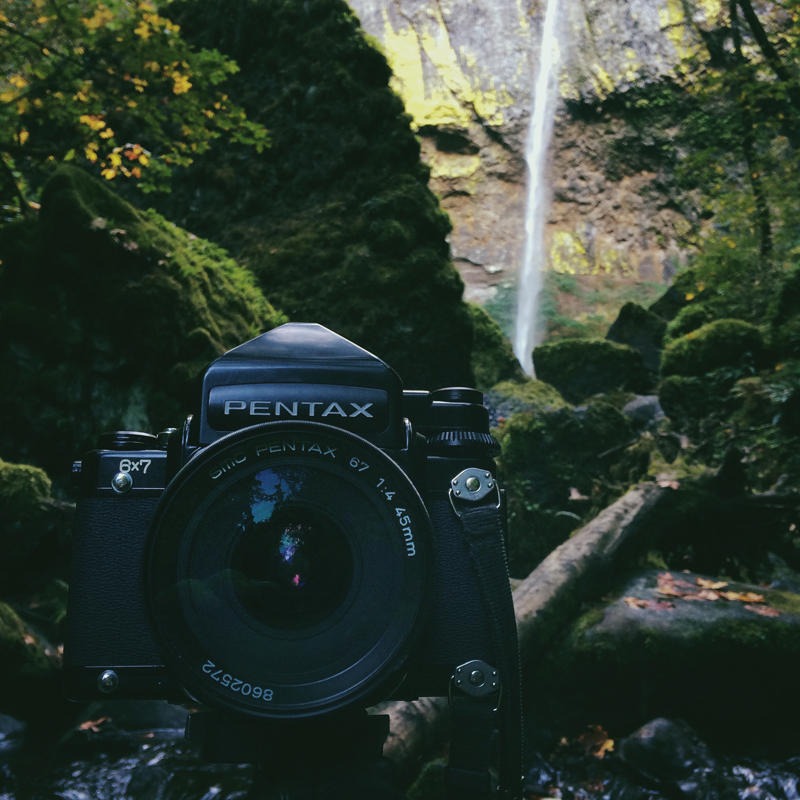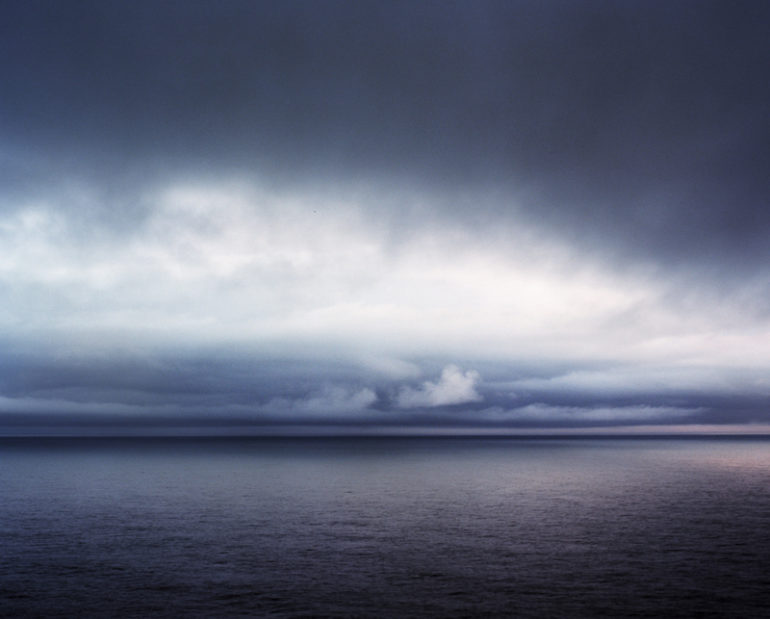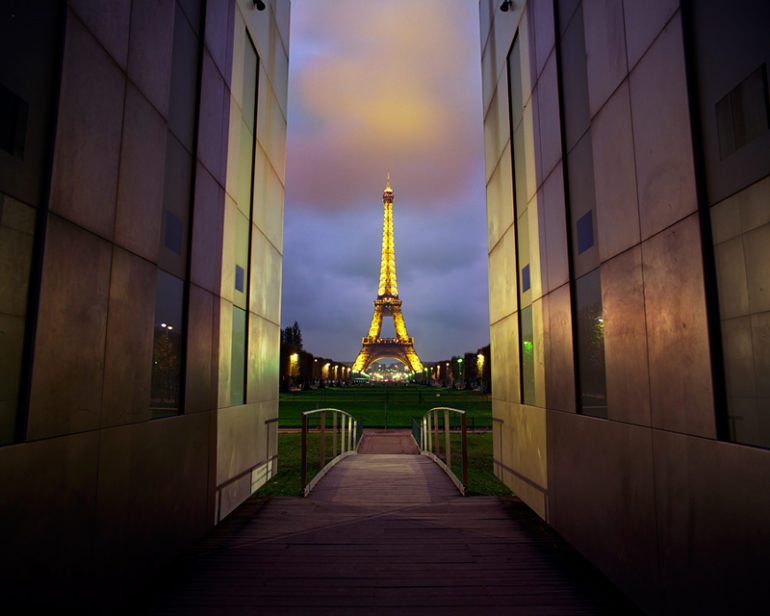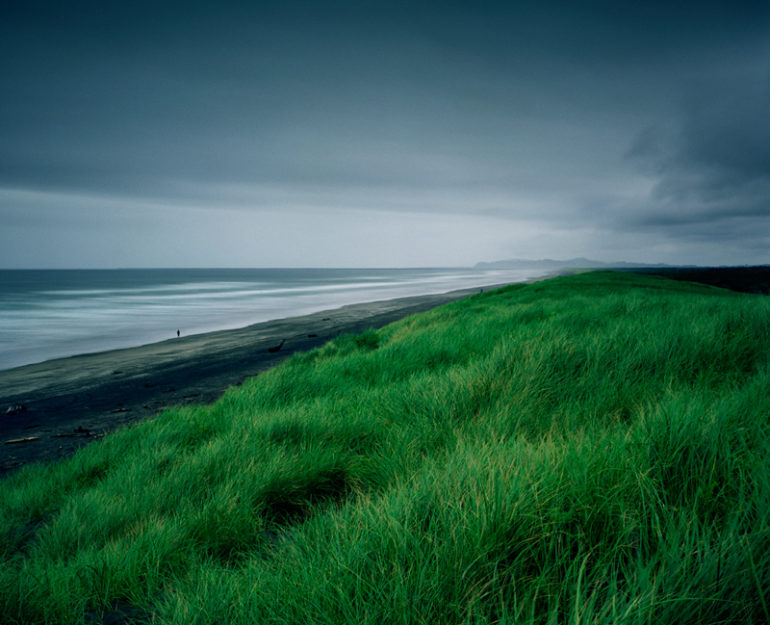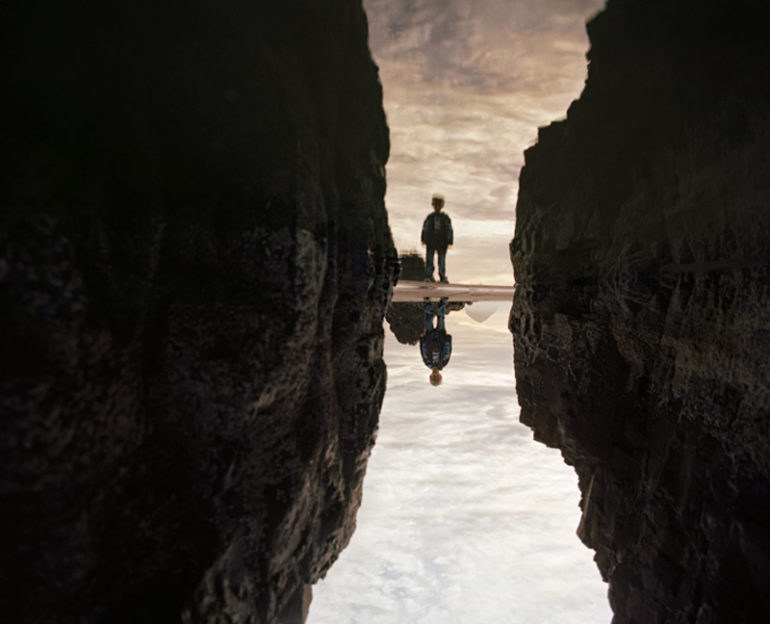All images and text by Zeb Andrews over at Blue Moon Camera. Used with permission.
Where to start with the Pentax 6×7? How about if we start with the fact that I love this camera; so this way you know exactly where I am coming from as you read this. I have been using this camera for over a decade now, and though I now carry other cameras with me more frequently, my Pentax has a special place in my camera lineup that no other camera can compete with.
The Pentax 6×7 is not that dissimilar to most 35mm SLR cameras – if you gave those cameras steroids and pumped them up to twice their original size. The Pentax 6×7 is a pretty straight-forward camera. Exposure is done entirely manually, it uses its own line of bayonet mount lenses, can accept alternative prisms (including a meter prism and a waist level viewfinder) and is able to use either 120 or 220 film, creating either 10 or 21 6x7cm exposures per roll. The camera is a beastly tank, but such a good beastly tank. At the time of its introduction, it did exactly what a pro photographer needed it to: make 6x7cm medium format images while viewing through the camera’s main lens… and it did it well and surprisingly ergonomically for its size and weight.
Before I begin my praise for the Pentax 6×7 properly, let’s walk briefly through the camera’s history and highlight its different generations. There are important distinctions between the various Pentax 6×7 evolutions that factor into the buying and owning of these medium format SLRs.
The Pentax 67 was originally introduced to the world in 1969 as the Pentax 6×7 (note the “x” in the name of the camera). You will encounter these cameras referred to as both the “Asahi” Pentax 6×7 and the “Honeywell” Pentax 6×7 with the difference being whether the camera was marketed in Asia or North America respectively.
Pro tip: The shutter speed dial on the 6×7 goes from 1 sec to 1/1000 with a B and an X mode. There is a hidden T mode that can be used by setting the shutter speed dial to the blank area between X and 1/1000. No locking cable release required!
Something also worth mentioning is the 1/30th flash sync if you’ve got the older models. Pentax, however, did eventually come out with a few leaf shutter lenses that helped with that problems. Future cameras had faster flash syncs of course.
The 6×7 was updated in 1976. It was still called the Pentax 6×7 and it looked almost exactly the same as the original except that it now had a mirror lock-up switch just to the side of the lens mount. This is an important feature as the Pentax has a huge mirror that is both loud and capable of creating undesirable amounts of camera shake under the certain circumstances. More importantly, the camera received a number of improvements to its internal components. The film advance system in the original Pentax 6×7 wore out over time and frame spacing became a common issue with that first generation of camera. The MLU (Mirror Lock-Up) 6×7 used new parts in the advance mechanisms as well as other parts inside the camera. These changes make the later 6×7 a much more reliable camera to buy these days. If one is looking at the early non-MLU 6×7, do so with caution and only for bargain prices. Due to the phasing out of those original internal parts, the first 6×7 cameras are much more difficult to repair nowadays. By contrast, the MLU 6×7 is more reliable, easier to repair and has mirror lock-up capabilities. Buy this version or the later 67.
Pro tip: The mirror cannot be returned down once triggered up by the MLU feature without firing the shutter, so be committed to a photo before locking the mirror up. Additionally, the MLU feature drains battery power when locked up. This can be a pain if you accidentally trigger the MLU while carrying the camera in a bag only to pull it out two days later to find a dead camera. If this happens to you and your Pentax 6×7, leave the camera in the fired state – don’t advance the film to the next frame – as the MLU can only be triggered when the camera is wound and ready for firing. Some models of Pentax 6x7s were modified after the fact to have a mechanical MLU that did not drain battery power. More importantly, Pentax 6×7 users should always carry a spare battery.
Which brings us to the later 67 model. In 1989, Pentax updated the 6×7 series one more time by releasing the Pentax 67 (the “x” now missing from the name). The Pentax 67 enjoyed some modest mechanical tweaks, namely a more accurate shutter and a brighter viewfinder. The 67 also underwent some slight cosmetic changes. It does look a bit different than previous 6×7 cameras but it is essentially the same Pentax 6×7. Because it was the last of this line (not counting the 67II which I am going to omit from this review) the 67 version is the most desirable in terms of mechanical reliability. It is the best one to get and tends to be the most expensive of the three iterations.
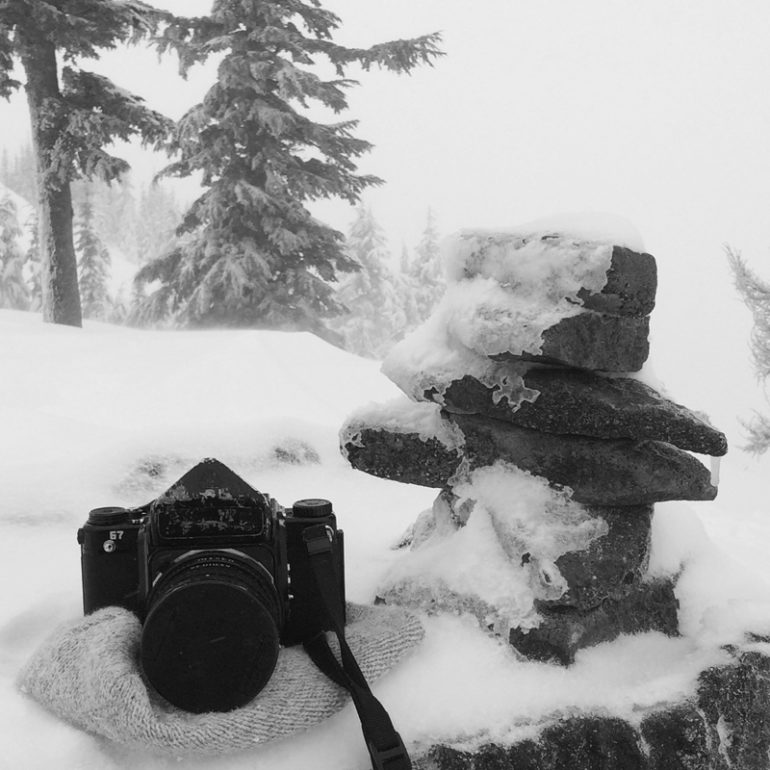
This history is important, but I really want to talk about the experience of using the camera today and an appropriate place to begin that discussion is how the camera feels in the hands. Despite its weight and size, the Pentax 6×7 really isn’t that hard to hold and operate; in fact it is pretty easy and intuitive. If you have ever used a Pentax K1000, Nikkormat EL2, Minolta SRT, Olympus OM-1 or Canon FTb then you will intuitively understand the Pentax 6×7 right away. The controls are so simply laid out; I hardly have to think about what I am doing when I have this camera out in the field. I make a lot of landscape photographs and when I first started experimenting with medium format I tried both the Mamiya RB67 and the Pentax 67 systems. The Pentax proved the much more comfortable camera to carry and use, particularly hand-held, than the Mamiya cameras. The Pentax 67’s ergonomics are really understated; pick one up and you’ll probably agree. Yes, it is big and yes it is heavy, but nonetheless it fits in the hands quite well and I love the feel and heft of this camera.
Pro tip: The camera body has four lugs for attaching a strap, one at each corner of the face of the camera. My advice is to use the two lugs at one end of the camera as opposed to the more traditional method of attaching the strap to the lugs at the top of the body. Due to the size of the camera, I have found that it hangs much better vertically than it does horizontally. Plus when the strap is attached to the top of the camera it can rub the shutter dial, unexpectedly changing your shutter speed from where you had left it set.
I diverge from popular opinion when it comes to the wooden grip accessory that Pentax made for these cameras. I think it is a beautiful accessory but for me it messes up my grip of the camera. The handle mounts on the left side of the camera and therefore is meant to be gripped with the left hand, but I prefer using my left hand to cradle the lens of the camera, giving me instant access to the focus and aperture rings. But you can try out the wood handle for yourself; it does help with carrying the camera and has an accessory shoe for mounting a flash.
Beyond ergonomics, what really gets me about these cameras is the 6:7 aspect ratio, which is such a beautiful rectangle. There is a subtle and mathematical elegance to a rectangle that measures 6×7 and I have found it works wonderfully for landscapes, particularly when photographing horizontally. This may seem an overly nerdy thing to love about a camera but the shape of the image rectangle is important. I photograph differently in 6:7 than I do in 1:1 or 2:3 because I see the world differently through those various windows. The 6×7 rectangle feels really comfortable to me; it is not too square, nor is it too rectangular.
As technical as I am regarding the history of this camera, I take an equally non-technical approach to the Pentax optics. For me it is all about character and feeling and I really dig the character of the Asahi lenses for the Pentax 6×7. The Pentax 67 lenses have a quality to them all their own. There is a depth and a richness to images exposed through this glass that balances all the factors you would want in a lens without overdoing any of them. I can look at images I made with my Pentax and easily tell them apart from images that came from my other cameras based on how they look. Mix these sublime qualities in with a large, 6x7cm rectangle and you have a recipe for wonderful images. This is something I think is easier to show you than it is to explain, so how about a visual demonstration.
Pro tip: The lenses have an A and M switch on them to select between automatic or manual apertures. By selecting M you can manually close down the aperture in the lens allowing you to see depth of field before exposure. Be aware though that if you are using a meter prism it will not be accurate in this mode as it will be double compensating.
I admit, I struggle to specifically define exactly what I find so beautiful about the Pentax 6×7 glass, just as I struggle to define why the roar of the ocean surf stirs my blood. Though I lack the ability to provide that exact definition, I nonetheless am capable of recognizing the beauty of these lenses as I see it. I look through the viewfinder of my Pentax, its solid weight resting in the palm of my hand, and I see a different world full of wonderful and subtle vision. For that reason, above all others, this camera keeps a special place in this photographically-centric heart of mine.
So there you have it: about all I can convey to you about the Pentax 6×7 without actually putting one in your hands. And I would encourage you to get your hands on one. They have a tendency to inspire devotion. The Pentax 6×7 is getting more well known these days as a viable alternative to a Hasselblad or a Mamiya 7. I bought my first 6x7s many years ago for well under $200 each, but in recent years their values have been steadily climbing. These days it can be tricky to find a later Pentax 67 kit for under $500 and some go even higher. If you find one for a good deal, don’t think on it too long or you’ll be missing out. And if you own and use one of these cameras, look me up on-line. I love seeing the work others make with these lovely beasts. Now, if you’ll excuse me, all this writing on the Pentax has motivated me to go grab mine off the shelf and get out there in the world with it.


